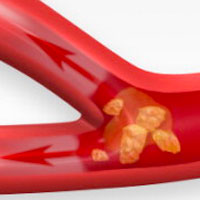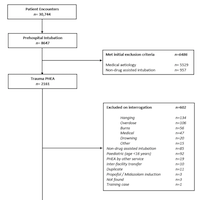Systematic Approach to the Peripheral Vascular Exam: Pearls & Pitfalls
emdocs.net
A 62-year-old male with a history of hypertension, congestive heart failure, type II diabetes mellitus, and tobacco use presents to the emergency department (ED) with severe left lower leg pain that started six hours ago. Notably, he works as a long-distance trucker. Vital signs are notable for tachycardia to 116 bpm and a blood pressure of 160/89 mmHg. Upon further questioning, he notes that he was diagnosed with peripheral arterial disease (PAD) a few years ago, but that pain is only present with ambulation. His current pain is worse and present at rest.
If the pedal or tibial pulses are proving difficult to find, this can be due to anatomical variation. Doppler can be used to find the location of the pulse and direct palpation can then be used to gauge the strength of the pulse and compare it to the contralateral limb.
Pearl: The doppler probe should be held at a 60-degree angle to the skin, pointing towards the flow of blood. Clinicians should avoid applying pressure on the probe as this might block a weak signal. Applying extra gel can help to avoid pressure on the area in question.
The Ankle-Brachial Index (ABI): useful or not?
An ABI is calculated by dividing the ankle systolic pressure by the brachial systolic pressure. To measure the ankle systolic pressure, put a blood pressure cuff on the ankle, find the pedal pulse with a doppler, inflate the cuff and then slowly release until the pedal pulse is heard on doppler.
Traditionally, an ABI less than 0.9 is concerning for PAD or other causes of arterial occlusion. An ABI less than 0.4 is indicative of critical ischemia.
Studies vary on reported sensitivity and specificity, but this tool has been used historically and may be requested by consulting services. Knowledge of how to perform the test may benefit the emergency clinician in bolstering an argument for acute limb ischemia; however, the test has not been shown to be predictably superior to the experienced provider’s peripheral vascular exam and pulse palpation, thus a strong clinical suspicion should take priority over a reassuring ABI score.
















